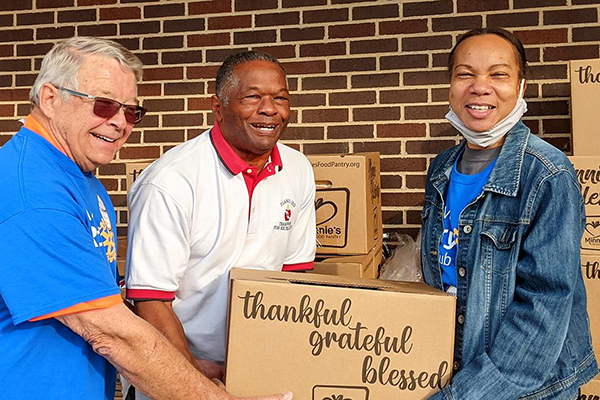
By Alex Johnson, Rotary Club of Plano West, Texas, USA, and Rotary Coordinator Zone 25B & 29
As I stepped into my role as president of the Plano West Rotary Club on a scorching summer day in 2020, I was faced with a daunting challenge. The club had been steadily losing members for a decade and had only 21 left. What’s more, the COVID-19 pandemic had forced us into lockdown, rendering most plans and strategies useless. But I wasn’t one to back down, I had a vision for turning things around.
I felt the best way to gain more members was to focus on service. We used Rotary’s Action Plan to create a plan of attack and get members involved in satisfying service. We organized multiple small but meaningful service projects each month, and every month we increased our impact. We kept asking people to lend a hand so we could expand our reach. In this manner, we increased our ability to adapt.
Through this method we accomplished 81 projects in a single year. Four new members were inducted every month. By enhancing participant engagement, we turned volunteers into a part of Rotary and kept helping our community.
Companion club model
We also created a new service-focused club model that was designed to allow people to join us in making a difference in our community without the obligation of weekly meetings and high dues. This model was appealing to certain members of our club, and so we made it a companion club that is part of our membership but separate, much like a satellite club.

It’s been an amazing transformation. Within the first year, the club tripled its membership to 63. Even more exciting, women became a majority, and we grew more racially diverse. Our median age also decreased by 17 years.
To replicate this success, I have a team of 20 volunteers who are helping 23 districts from Canada to Texas form more of these service-based companion clubs. We’ve found success in this model because it takes fewer members to start, they already know Rotary, and the satellite grows quickly because of the support it gets from the sponsor club. It’s an exciting opportunity for new members to engage in meaningful work and contribute their skills and talents to create positive change in their communities. Together, we focus on projects driven by local needs.
We also found success in using different methods to reach people with our message. We started by inviting people to events via email and social media. This allowed prospective members to get a feel for our club before ever attending a meeting. Our events were designed to get attendees actively involved in our service projects from the start. This level of engagement is critical to capturing their interest and building a sense of community. Additionally, we got our message and invitation out through promotional materials at local businesses and through word-of-mouth.
It is vital to have a strong message and clear objectives. These enable you to attract individuals who are eager to join the effort and contribute to positive change. Service-based clubs work – whether they’re a companion club or standalone – because they allow members to come together, take action, and create impact!
Finding People to Invite: A Prospective Member Exercise — Try these strategies to attract qualified members for your club.
https://blog.rotary.org/2023/08/22/service-companion-club-grows-membership/
